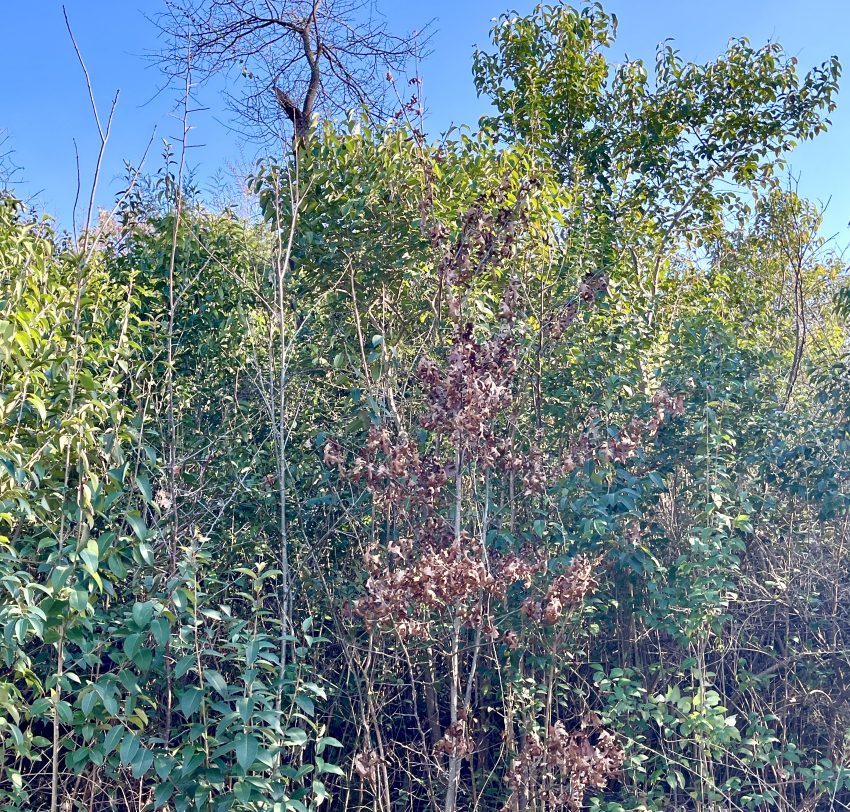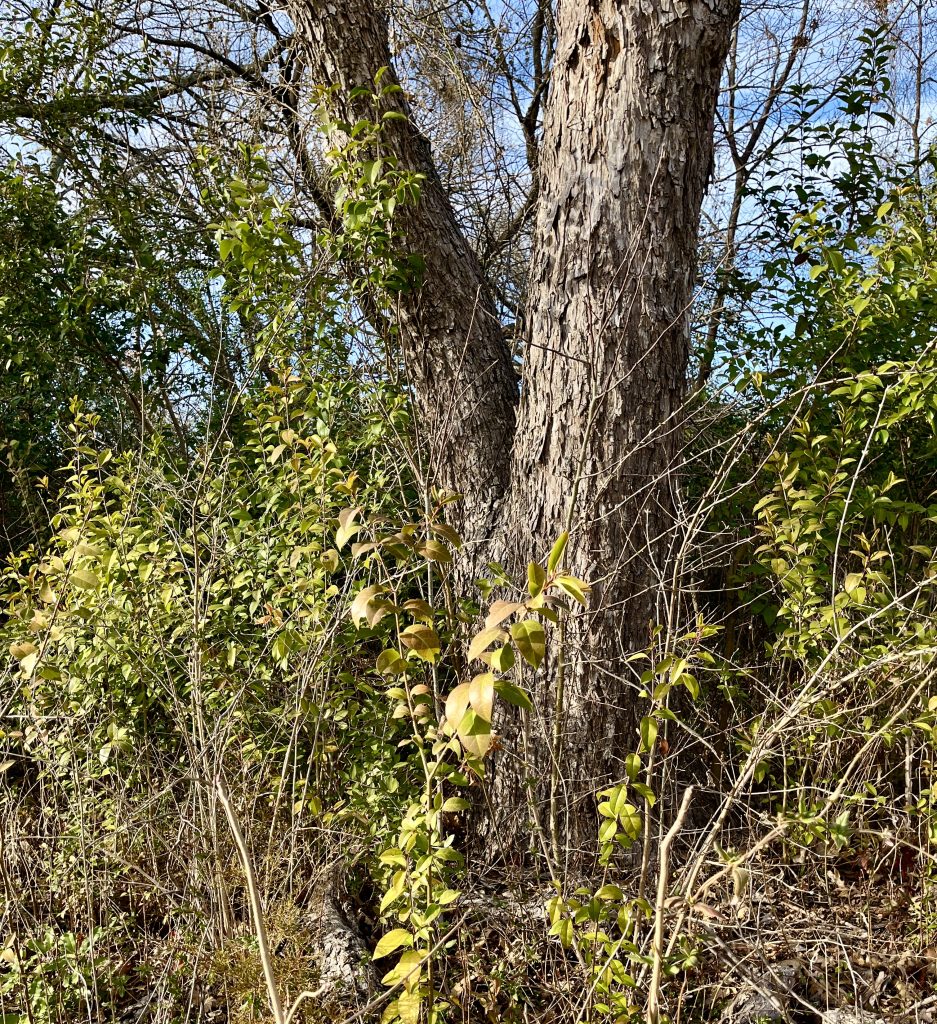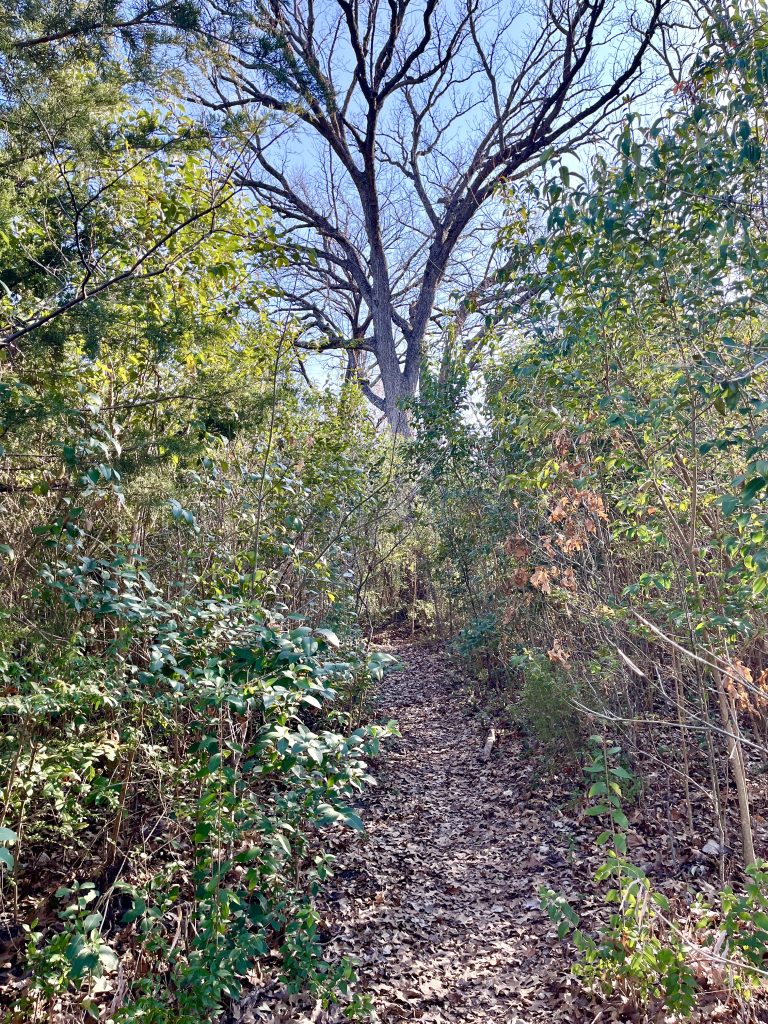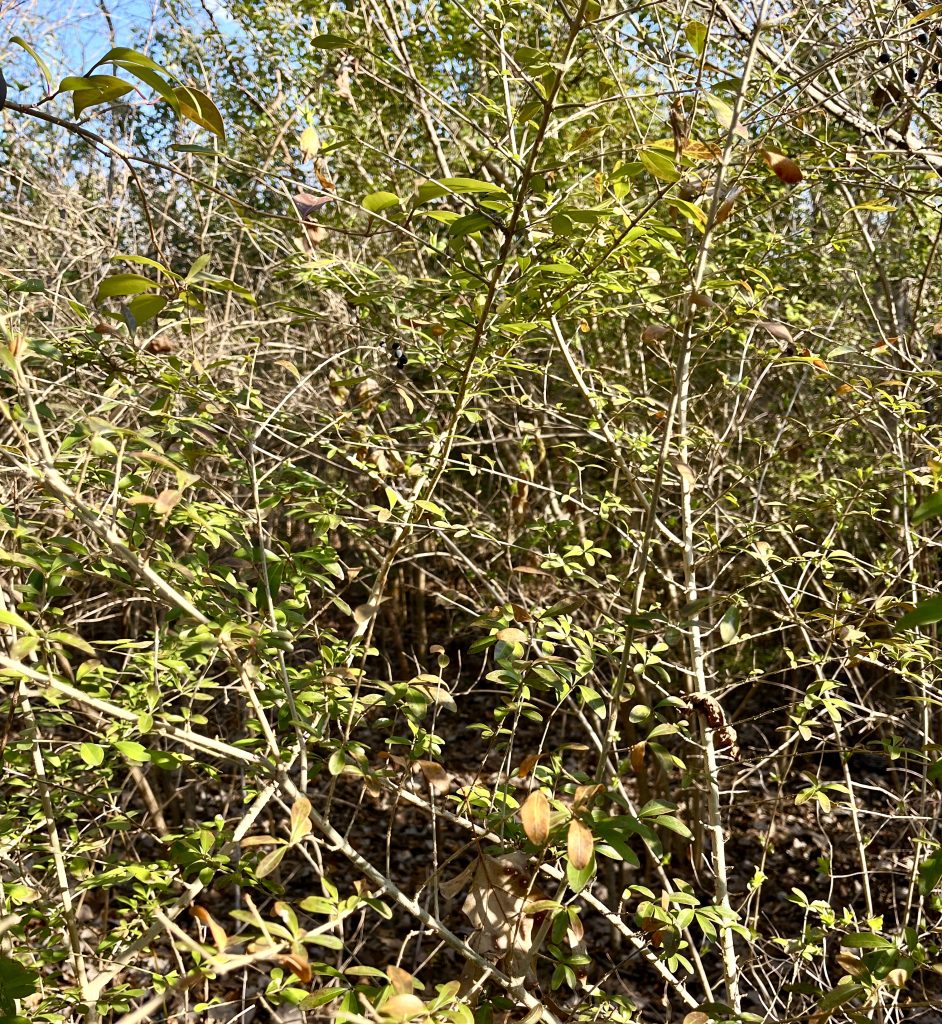
What’s an invasive species in Eastwood and why should you care?
National Invasive Species Awareness Week has come to a close. In Eastwood, what is an invasive species and why should you care? They’re green, right, and green is good?
An invasive is a plant not native to the area. Lacking the usual predators and diseases of its original home, it can run rampant. It grows faster, puts out an immense amount of seeds or berries, and often spreads by underground rhizomes, too.
Privet is all that.

Let’s look at wax-leaf ligustrum, also called big-leaf privet. A landscape plant from China brought over in the early 1800s, maybe sooner. It and its smaller leaved relatives have consumed over 20 million acres across the South.
Though classified as a shrub, in the US wax-leaf ligustrum can grow 40 feet tall. It can kill trees. These five-foot-tall ligustrums will spell the end of this majestic pecan along the meadow trail within the next decade or two if not managed.
You know the green mess behind the playground back where the defunct pedestrian bridge is? We call that the ligustrum forest since 90% of it is big-leaf privet.

It looks like this.
Lost in the green mess are impressive hardwoods struggling to survive. You may have noticed the large hardwood tree back there that lost its top half in the May windstorm. Chances are, that happened because it was weakened by privet.
Now that there’s little foot traffic back there, the ligustrum forest provides cover for criminals to stash stolen goods, sexual predators to lurk, and small encampments to arise.
Privet is a security issue.
But it’s also a biodiversity issue. Where there’s privet takeover, nothing else lives. No birds, no wildlife, no understory plants that provide food and cover. Nothing. A green desert. Lacking groundcover, it’s highly erodable.
Here’s another hardwood tree behind the playground doomed to die because of ligustrum:

On some upcoming workdays, Eastwood Riparian will focus on wax-leaf ligustrums in the greenbelt that threaten larger trees and other invasives that spell doom for desirable natives.
Next up: Chinese privet, a small-leafed privet, and Amur honeysuckle, a bush honeysuckle from eastern Russia.
by Amy Martin, author of Wild DFW: Explore the Amazing Nature Around Dallas-Fort Worth on Timber Press

Fun In The Greenbelt
Spring Equinox Dixon Branch Greenbelt Walk
- March 19 Wed. – 6:30 to 7:30 pm (sunset 7:38 pm)
- Gather on Creekmere between Sylvania and Overglen
Amy Martin, author of the best-selling Wild DFW: Explore the Amazing Nature Around Dallas-Fort Worth, is a long-time Eastwood resident. She is known for leading adventurous and fun-spirited walks. She helps hikers read the land, understand the local ecology, and show where wildlife thrives and why. She might identify a plant or two and will help you use iNaturalist and other apps to do so on your own. You will learn why to hate privet and Amur honeysuckle as much as she does. Join her for an after-work walk in the Dixon Branch Greenbelt in celebration of Spring Equinox. Wear sturdy footwear (no flipflops); long-pants preferred.
Eastwood Riparian Restoration Day
- March 22 Sat. at 10 am: leader Amy Martin of Wild DFW
- park on Creekmere between Overglen and Creekmere Circle
Open up the greenbelt riparian woods trails from fallen trees and branches. Liberate a grove of very cool rusty blackhaw viburnum from the clutches of invasive Amur honeysuckle and Chinese privet. Brainstorm expansion of the woods trails. Open up the greenbelt riparian woods trails from fallen trees and branches. Liberate a grove of very cool rusty blackhaw viburnum from the clutches of invasive Amur honeysuckle and Chinese privet. Brainstorm expansion of the woods trails. Wear sturdy footwear (no flipflops) and work gloves. Long-pants preferred; overshirt suggested. Bring loppers, clippers, and shears.